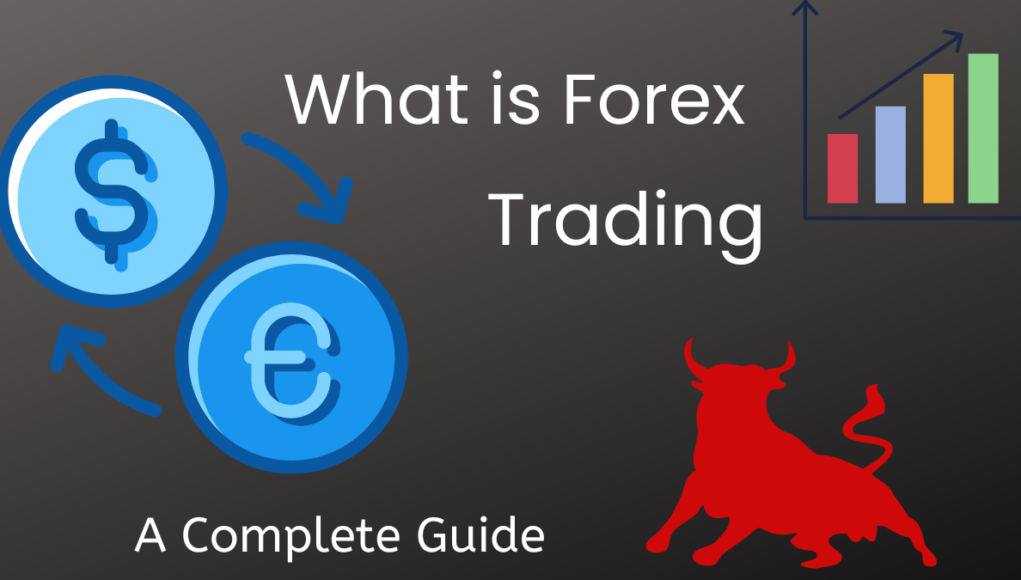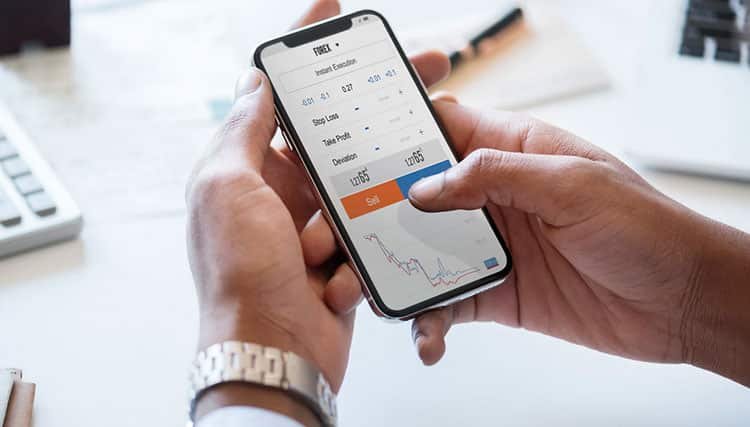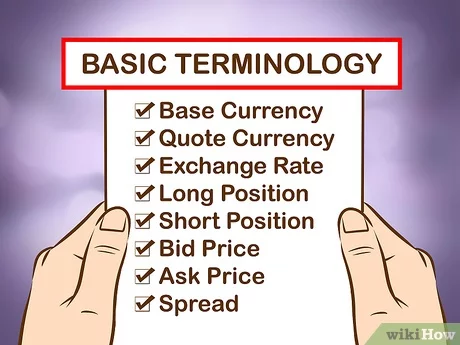Welcome to our comprehensive guide on forex trading for beginners. If you’re new to the world of forex trading and eager to learn the ropes, you’re in the right place. In this article, we’ll provide you with a step-by-step overview of the forex market, explain key concepts, and share practical tips to help you get started on your forex trading journey. So, let’s dive in!
Understanding the Forex Market
The forex market, also known as the foreign exchange market, is the largest and most liquid financial market in the world. It’s a decentralized market where global currencies are traded 24/7, allowing participants to buy, sell, and exchange currencies based on their expectations of future price movements.
How Does Forex Trading Work?
Forex trading involves buying one currency and selling another currency simultaneously in pairs. The most commonly traded currency pairs include EUR/USD (Euro/US Dollar), GBP/USD (British Pound/US Dollar), USD/JPY (US Dollar/Japanese Yen), and USD/CHF (US Dollar/Swiss Franc), among others.
Forex traders speculate on the direction of currency prices by analyzing various factors such as economic indicators, geopolitical events, and market sentiment. They use trading platforms provided by brokers to execute their trades, which can be done in real-time and allow for leverage, enabling traders to control larger positions with a smaller amount of capital.
Key Concepts in Forex Trading
Before diving into forex trading, it’s essential to familiarize yourself with some key concepts that are fundamental to understanding how the market works.
Currency Pairs
As mentioned earlier, forex trading involves trading currency pairs. Each currency pair consists of a base currency and a quote currency. The base currency is the currency you buy or sell, while the quote currency is the currency you use to make the transaction. For example, in the EUR/USD currency pair, the Euro (EUR) is the base currency, and the US Dollar (USD) is the quote currency.
Bid and Ask Price
When trading forex, you’ll come across two prices: the bid price and the ask price. The bid price is the price at which you can sell the base currency, while the ask price is the price at which you can buy the base currency. The difference between the bid and ask price is called the spread, and it’s the cost of the trade.
Leverage
Leverage is a powerful tool in forex trading that allows traders to control larger positions with a smaller amount of capital. It’s expressed as a ratio, such as 1:50 or 1:100, and it means that for every dollar of your capital, you can trade up to 50 or 100 dollars, respectively. While leverage can amplify profits, it can also increase losses, so it’s crucial to use it wisely and manage risk carefully.
Risk Management
Managing risk is a critical aspect of forex trading. It’s important to set stop-loss and take-profit orders to limit losses and lock in profits. Stop-loss orders automatically close a trade when the market moves against you to prevent further losses, while take-profit orders close a trade when a certain profit level is reached. It’s also essential to diversify your trading portfolio and not risk more than you can afford to lose.
Step-by-Step Guide to Get Started with Forex Trading
Now that you have a basic understanding of the forex market and key concepts, let’s walk you through a step-by-step guide on how to get started with forex trading.
Step 1: Educate Yourself
Forex trading requires knowledge and skills, so it’s crucial to educate yourself before diving in. Read books, take online courses, and follow reputable financial news sources to stay updated with the latest developments in the forex market. Familiarize yourself with technical and fundamental analysis, learn how to read charts, and understand various trading strategies.
Step 2: Choose a Reliable Broker
Selecting a reputable broker is crucial in forex trading. Look for a broker that is regulated by a recognized financial authority, offers a user-friendly trading platform, provides reliable customer support, and offers competitive spreads and leverage options. Take the time to research and compare different brokers to find the one that best suits your trading needs.
Step 3: Open a Trading Account
Once you have chosen a broker, you’ll need to open a trading account. Most brokers offer different types of accounts, such as standard accounts, mini accounts, and micro accounts, with varying minimum deposit requirements. Choose the account type that aligns with your trading budget and goals, and follow the broker’s instructions to complete the account opening process.
Step 4: Develop a Trading Plan
Having a well-defined trading plan is crucial to success in forex trading. Your trading plan should outline your trading goals, risk tolerance, preferred trading style, and strategies. It should also include rules for managing risk, setting stop-loss and take-profit levels, and tracking your trades. Stick to your trading plan and avoid impulsive trading decisions based on emotions.
Step 5: Start with a Demo Account
Before risking your real money, it’s advisable to practice your trading skills with a demo account. Most brokers offer free demo accounts that allow you to trade with virtual funds in real-market conditions. Use this opportunity to test your trading strategies, familiarize yourself with the trading platform, and gain confidence in your trading abilities.
Step 6: Start Trading with Small Positions
When you’re ready to start trading with real money, it’s best to start with small positions to manage your risk. Avoid risking a significant portion of your capital on a single trade. Start with smaller trade sizes and gradually increase your position sizes as you gain experience and confidence in your trading abilities.
Step 7: Continuously Educate Yourself and Adapt
Forex trading is a dynamic market that requires continuous learning and adaptation. Stay updated with the latest market trends, economic indicators, and geopolitical events that may impact currency prices. Continuously educate yourself, refine your trading strategies, and adapt to changing market conditions to improve your trading performance over time.
Tips for Successful Forex Trading
In addition to the step-by-step guide, here are some practical tips to help you succeed in forex trading:
1. Develop a Trading Discipline
Having discipline is crucial in forex trading. Stick to your trading plan, follow your risk management rules, and avoid impulsive trading decisions based on emotions. Be patient and wait for the right trading opportunities that align with your trading plan.
2. Use Proper Risk Management
Managing risk is paramount in forex trading. Set appropriate stop-loss and take-profit levels for each trade to limit your losses and protect your profits. Avoid risking more than 1-2% of your trading capital on a single trade.
3. Keep Emotions in Check
Emotions can cloud your judgment and lead to impulsive trading decisions. Avoid trading based on fear, greed, or other emotions. Stay calm and objective, and base your trading decisions on technical and fundamental analysis.
4. Diversify Your Trading Portfolio
Don’t put all your eggs in one basket. Diversify your trading portfolio by trading different currency pairs and using different trading strategies. This can help spread your risk and increase your chances of success in forex trading.
5. Keep Learning and Improving
Forex trading is a continuous learning process. Stay updated with the latest market trends, improve your trading skills, and refine your trading strategies. Learn from your trading mistakes and successes, and continuously strive to improve your trading performance.
6. Be Patient and Persistent
Forex trading requires patience and persistence. It’s important to understand that not every trade will be profitable, and there will be periods of losses. Stay focused on your long-term trading goals and don’t let short-term setbacks discourage you. Keep learning, adapting, and refining your trading strategies.
7. Keep a Trading Journal
Maintain a trading journal to track your trades, analyze your performance, and identify areas for improvement. Record your entry and exit points, trade size, stop-loss and take-profit levels, and the reasoning behind your trades. Review your trading journal regularly to learn from your trades and make adjustments to your trading plan.
Conclusion
Forex trading can be a lucrative venture for beginners, but it requires dedication, discipline, and continuous learning. By following the steps outlined in this comprehensive guide, you can lay a strong foundation for your forex trading journey. Remember to choose a reliable broker, develop a trading plan, start with a demo account, use proper risk management, keep emotions in check, diversify your trading portfolio, and continuously educate yourself and adapt to changing market conditions. With patience, persistence, and a commitment to continuous improvement, you can increase your chances of outranking other websites and succeeding in the competitive world of forex trading.



































